We’re closing in our fifth year anniversary of full-time RVing. In some ways it feels as though we just pulled away from the curb, having handed over the keys to our former “sticks and bricks” house to its new owners. In other ways we feel like true veterans (especially when we watch someone new to RVing back a 38-foot fifth wheel into an overnight spot).
Over those years we’ve learned plenty, yet every day we’re reminded there’s a lot more to discover.
If you’re considering a full-time RV lifestyle, you have a lot to discover and learn, too. Fortunately, RVers love sharing what they know so a good Google search will arm you with more information and resources than you could imagine — each helpful in its own way.
So here’s one more perspective on this unique lifestyle. If it helps you make a decision either way, I’m glad.
Full-Time RVing Is Not the Same Thing as a Vacation
A lot of people, when they hear we live and travel full-time in our RV say, as we part, “Have a great vacation.” Maybe it’s a habit; maybe they don’t know what else to say that isn’t “good-bye” or “see ya.” But the fact is some people do think we’re on a permanent vacation. The differences are so vast it would take a book to really cover the topic, so I’ll just say here that when you’re full-time RVing (“full-timing” for short) you are *not* on a vacation.
When your vacation is over, you go home. When you’re a full-time RVer, you’re always home. Home is, truly, everywhere. And because you’re always home, you’re also taking all of your regular chores with you: laundry, cleaning the toilet, making the bed, paying taxes, renewing your insurance, banking… None of the things you normally escape from on vacation go away when you full-time.
Giving up a sticks and bricks house for an RV doesn’t mean you escape doing chores. RVs require enough maintenance and care to last you the year. You might have given up painting a house, but you’ve gained waxing an RV:
Full-timing isn’t a vacation, it’s a change in your lifestyle.
Don’t Be Surprised If You Can’t Travel All the Time
It seems obvious now, five years into this nomadic existence, but when we started out I truly thought we could travel year-round — wheeling across the northern states and Canada (even up to Alaska, as we did last summer) during the warmer temps, and trawl the lower edge of the US in colder months.
We set out in the spring our first year, making our way westward from the Great Lakes, stopping to set up banking and mail forwarding along the way. We spent time in the Badlands, Black Hills, Glacier National Park, Olympic National Park, and Mount Rainier National Park. As the leaves started to turn, we turned south. It seemed the leaves were perpetually in color as we drove.
Down through California and into Arizona we went, following our loose plan to continue eastward along the Gulf Coast through the winter months. We stopped in Yuma in December, and didn’t leave for five months. We kept watching the weather, waiting for ideal driving time. We watched wave after wave of chilly, rainy weather march across the south (never mind the snow up north). Before we knew it, spring — and increasingly hotter weather — was on us, and it was time to turn northward again.
Unless you’re in Hawaii or a few choice places in the desert southwest (like Yuma, Arizona), winter makes its presence known: it rains or hails. And when I say rain, I mean torrents. Days and days of it. The days get chilly. It’s hard to want to do anything outside.
If you truly want to travel year round, you’ll have to navigate bad weather: snow on mountain passes, blinding sand storms, weeks of chilly rain. No wonder so many RVers hunker down in towns like Yuma, soaking in the rays, waiting till the weather clears across the rest of the continent.
Even then, weather can intrude in the form of windstorms and wildfires… If you’re a full-time RVer, you have to be willing to adjust your travel, to shed the notion of “schedules.” We skipped seeing Fairbanks, Alaska, because wildfires spewed nasty particulates all over that area when we were there.
You have control over a lot of things when you full-time: you can sleep in your own bed, cook your own food, go where you want. But you can’t control nature. You can only adjust to its whims and furies.
The Weather Won’t Be Your Only Obstacle
Even when the weather cooperates, you’ll find yourself subjected to the whims and curses of your rig. Your RV. Your tow vehicle (the vehicle you use to pull your RV). Or your toad (the vehicle you tow behind your motorhome). These mechanical monsters have their own diabolical plans. They will conspire to spoil your best plans. A tire will explode. An engine light will go on — its mysterious source eluding you for miles, forcing you to stop and hunt down the nearest repair shop.
You can’t function without your rig. You care for it. You baby it. Still it deceives you. Betrays you. Turns on you like your worst enemy.
One fellow RVer told us: “If you ain’t fixin, you ain’t RVin’.” Sad but true.
If odd RV noises intrigue you (rather than frustrate you), or if water on the floor challenges you (rather than infuriates you), full-timing is for you. If you relish the idea of spending every spare minute learning the intricate wiring, plumbing, ductwork, and mechanics of your rig, RVing is for you.
Yes, you’ll learn some tricks along the way, like keeping an eye on every RV repair shop you pass on the road, mentally mapping it, just in case, or carrying extra pieces and parts (like a spare tire for your spare tire).
Checklists and Spreadsheets
I have more checklists than I’d like to admit, but I’m glad I have every single one of them: steps for taking down the rig when we’re getting ready to leave; steps for setting up the rig when we arrive at the next place; a checklist for boondocking, and one for packing when we’re going away from the rig to stay in a motel or hotel.
When I tried to keep all the steps in my head, we discovered at the next stop that we’d left a good wrench behind when we needed it for a water hookup. We ended up re-doing certain steps because we got ahead of ourselves then needed to go back and start over.
After five years, I still use checklists. They’re much improved and altered since the first ones we used, but they’re also perfect for our rig and our method. I print out a bunch of them, clip a pen over it, and tick things off as we finish them. We’re like a well-oiled machine. But only because of the lists.
If you have favorite products (who doesn’t?), then one of the more frustrating aspects of being on the road is finding those items in new places, over and over. Since we started full-timing, more and more stores carry organic produce and dairy products, so they’re easier to find than they once were. Back then I started a spreadsheet simply titled “Where to Find.” On it I list those favorite products, the towns and stores we’ve found them in and (when I think of it), the prices.
It sounds pretty odd — to track on a spreadsheet where you shop, but after you’ve been through several states and hundreds of stores, you’ll appreciate what it’s like to walk through the door thinking, “Oh, milk is over there…” only to quickly get turned around because you’re remembering a different store in a different town.
Even chains carry different items from one store to another. A spreadsheet or tracking system that works for you is a good idea: you’ll know when and where you can find that special granola you liked or the salt-free, organic butter….
I often say that by the time I learn the local TV stations or where to find bottled water in the local grocery, it’s about time to move on.
Spreadsheets also help me remember which bookstores are in which town, what the hours are for the libraries we frequent, where to find the restaurants we’ve fallen in love with (and what to order there), not to mention the locations of the various farmers’ markets and the days of the week they’re held.
When the country is your neighborhood, it’s a lot harder to keep the streets and businesses straight, to remember which radio stations play jazz or which RV parks had cable.
Being a full-timer means being organized in ways you didn’t think you’d need to be… especially if you want to re-visit places with the least amount of re-orienting when you get there.
Living in a Very Small Space
When we downsized from a 3000 square-foot, three-level house to a 400 square-foot fifth wheel, I gave up a large walk-in closet. It was like dividing what I owned by half, then half again, then half again, then half again, and even at that point I had more clothes and accessories than I could fit in the rig. I still double-hang clothes on the hangers and you wouldn’t believe how creative a person can be when it comes to storing shoes. Deciding which books to bring along was even more difficult.
We’ve become great at making the most of the small space we have. Here’s a photo of our kitchen linen drawer. The space size is 15.5″ x 9″ x 3″ deep. With some careful folding and by rolling the dishrags, I can fit 10 tea towels (the type generally used to dry dishes) and 8 dish rags into this drawer:
We packed what we thought we’d need, gave away much of that after a few months on the road, then re-bought stuff we realized we needed after all. But stuff is stuff.
Living in a small space isn’t just about how much stuff you can pack, but about negotiating that space with the person you love. Navigating in tight quarters.
We were told when we started we’d better have a great relationship to full-time RV together. You’re not just in a small rig together — you’re in a small rig together all of the time. You’ll travel together, explore together, eat together. We now travel in a much smaller rig — a 32′ Class C. We’ve learned to alert each other when one of us is coming out of the bedroom and the other might open the bathroom door.
I’m convinced that full-time RVers (especially those who travel in small rigs) probably have some pretty good moves on the dance floor, with the choreography that goes on daily just getting from one end of the RV to the other.
Daily Habits
When you live in a sticks and bricks house, it’s easy to form and keep habits, like going to the gym or riding your bike a certain route around town, or spending holidays a certain way.
Every day can be different for full-timers, so setting — and keeping — certain habits can be a challenge, especially when it comes to physical activities. If you’re used to belonging to a gym, you’ll need to find ways to do something similar while traveling. The workout rooms in most RV parks are pathetic so finding a local gym with short-term memberships might work for some people.
We travel with our bicycles, so we’re always on the lookout for places to ride. We’re not keen on riding the open roadways (too many crazy drivers out there), so we’re in our element in places like Sioux Falls where we can ride to our hearts content on the 30-mile paved hiking-biking path around the city, along the river. Some places we find the edge of town and ride the less-traveled roads. Sometimes we just ride around the RV park.
Full-timers spend enough time sitting on their butts on travel days, so getting out and about whenever possible is essential to maintaining good health. Unfortunately, finding all the possibilities in a town every time you move is one of the challenges to full-time RVing.
It’s tempting, too, to eat out a lot (and many RVers do just that) because preparing meals in tiny RV kitchens can be so frustrating. Restaurant food is loaded with preservatives and other stuff that isn’t good for our bodies (and it’s often much more fattening!), so setting the habit of eating in more often than eating out is critical.
Some RVs have such small showers that using the public showers in RV parks and campgrounds is necessary. If you have an aversion to showering where someone else has left long strands of hair on the walls, make sure you can fit into the shower in your rig. Not only fit, but soap up, rinse down, retrieve a dropped bar of soap, shave your legs. And know that you might be showering with just a light sprinkle of water trickling onto your body: many places have poor water pressure.
See why RVing isn’t like being on vacation?
If you full-time, what would you add to this list? What have you discovered about this lifestyle that you haven’t seen mentioned in other places? What odd adjustments have you had to make since becoming full-time RVers? Share your stories in the Comments section.

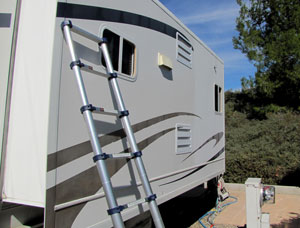
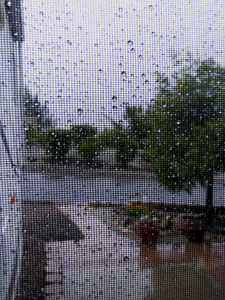
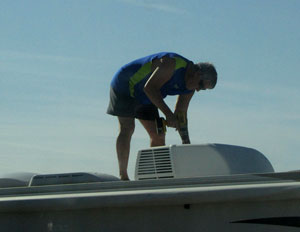
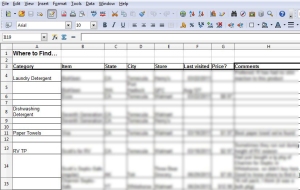
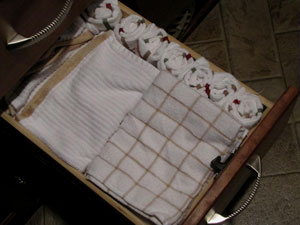




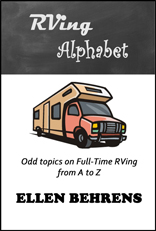






Not an RV’r but I enjoyed reading your posting. I know it will benefit, and destroy some fantasy’s, of those anyone thinking of going full time. However better to face reality knowing what is in store for you. Again a great posting.
Thanks, Pete! When we contemplated this lifestyle, everyone had great things to say about it — and it does have its benefits, to be sure. But there’s a lot you just don’t find about full-timing that should tell the real story. This post was my attempt to chisel away at a few of the myths.
So glad to see summer coming to Alaska!